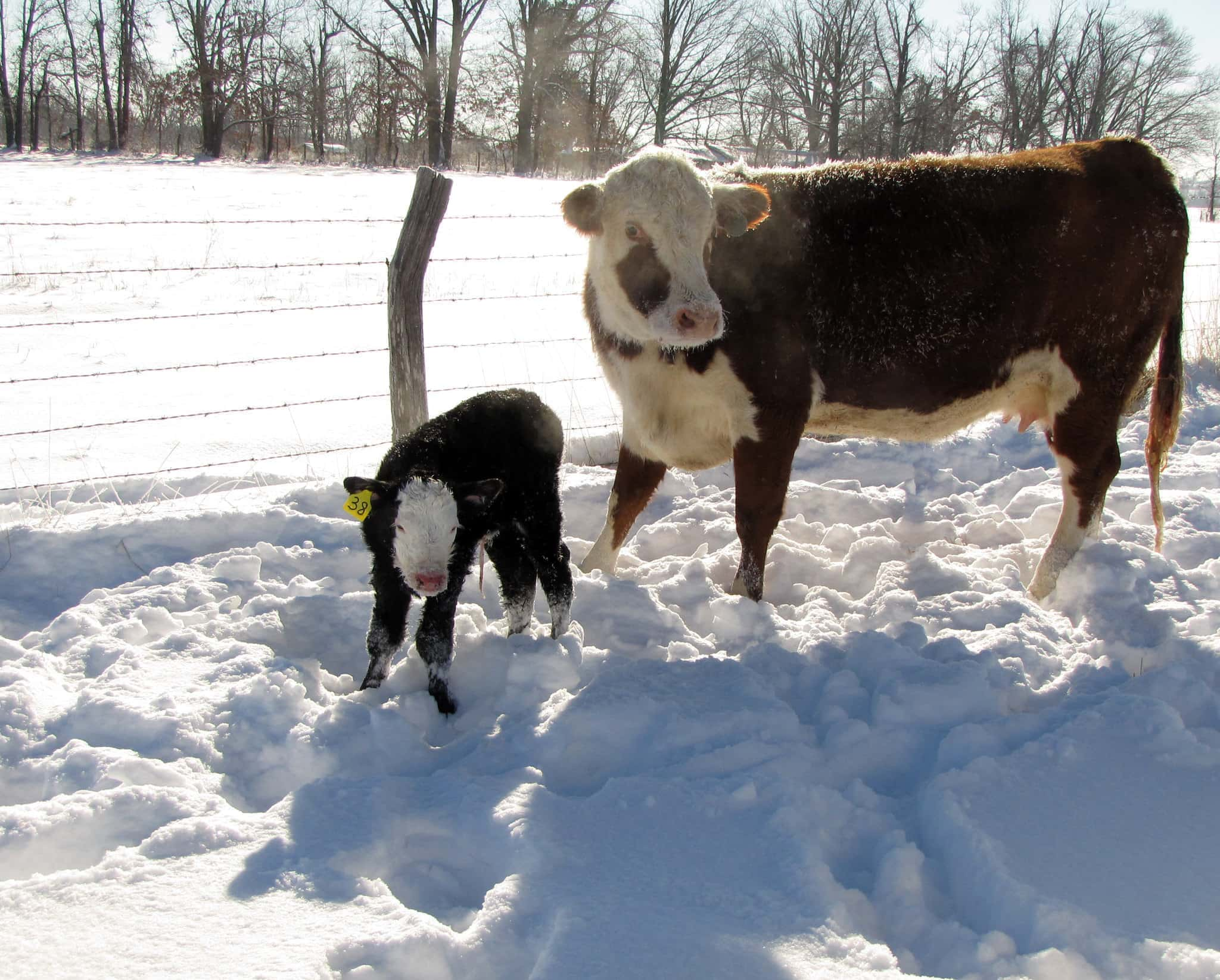
NDSU Extension
In the spring of 2019, the Northern and Central Plains regions experienced extremely cold and snowy weather. The sub-zero temperatures during calving season caused many calves to lose their ears and tails to frostbite, which can then cause cattle buyers to discount those calves during fall sales, says Bryon Parman, North Dakota State University Extension agricultural finance specialist.
“While frozen ears and tails are not necessarily a problem in and of themselves, they do indicate a calf was born under cold conditions,” says Karl Hoppe, NDSU Extension livestock systems specialist at the Carrington Research Extension Center. “Whether frozen ears are a result of the cow repeatedly licking the calf’s ears and making them wet during freezing temperatures or a calf being born during a windy, below freezing day, both can result in short ears.”
Short tails could result from freezing temperatures or from being stepped on by a cow. Both are indications that the calf might be, but not necessarily, at a health risk, says Hoppe.
Short ears may reduce the option to implant calves since the ear may not be long enough to be implanted according to labeled directions. Feedlot gain and final weights will be reduced when not using implants.
“Discounts for calves with short, frozen ears or tails, and other less-desirable market factors are always greatest during the heavy fall calf marketing season,” says Tim Petry, NDSU Extension livestock marketing specialist. “Last year, discounts of $30 or more per hundredweight sometimes occurred.”
Petry adds, “Discounts could even be greater this year with more short-eared calves expected to be marketed. Furthermore, discounts do not seem to be consistent from lot to lot at a sale and from one sale to the next. At times, calf sellers are surprised at how severe the discounts are when they receive their sale proceeds. Producers are encouraged to contact their market for advice prior to marketing calves that may be discounted.”
Producers have several options to help them reduce discounts on cold-affected calves at sale time, says Parman.
The first option is to have a veterinarian examine animals with frozen ears and tails. A certification from a veterinarian that no further damage was done beyond the frozen ears and tails can assure potential buyers there are no future health issues with those animals resulting in stunted growth or severe illness.
The second option is to hold back animals missing ears and/or tails until they reach a weight of 800 lbs. This would ensure that any cold weather lung or foot damage issues would appear by the time they reach market weight.
Producers should weigh the cost of keeping an animal for an extended period of time to ensure that it is healthy versus the discount that may occur for cold-damaged animals.
Parman cautions, “Holding back additional animals this year in North Dakota may be expensive given the shortage of forage or hay in some areas of the state.”